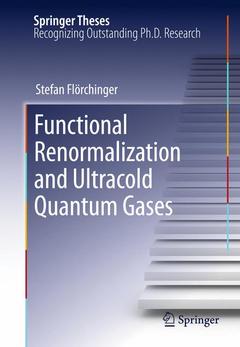Description
Functional Renormalization and Ultracold Quantum Gases, 2010
Springer Theses Series
Language: English
Functional Renormalization and Ultracold Quantum Gases
Publication date: 11-2012
202 p. · 15.5x23.5 cm · Paperback
Publication date: 11-2012
202 p. · 15.5x23.5 cm · Paperback
Functional Renormalization and Ultracold Quantum Gases
Publication date: 09-2010
202 p. · 15.5x23.5 cm · Hardback
Publication date: 09-2010
202 p. · 15.5x23.5 cm · Hardback
Description
/li>Contents
/li>Comment
/li>
Modern techniques from quantum field theory are applied in this work to the description of ultracold quantum gases. This leads to a unified description of many phenomena including superfluidity for bosons and fermions, classical and quantum phase transitions, different dimensions, thermodynamic properties and few-body phenomena as bound state formation or the Efimov effect. The non-perturbative treatment with renormalization group flow equations can account for all known limiting cases by solving one single equation. It improves previous results quantitatively and brings qualitatively new insights. As an example, new quantum phase transitions are found for fermions with three spin states. Ultracold atomic gases can be seen as an interesting model for features of high energy physics and for condensed matter theory. The research reported in this thesis helps to solve the difficult complexity problem in modern theoretical physics.
The Wetterich Equation.- Generalized Flow Equation.- Truncations.- Cutoff Choices.- Investigated Models.- Symmetries.- Truncated Flow Equations.- Few-Body Physics.- Many-Body Physics.- Conclusions.- Appendices.
A major contribution to the way we describe ultracold quantum gases Represents a quantitative improvement over previous methods and brings qualitatively new insights. Nominated by the University of Heidelberg as an outstanding theoretical contribution Includes supplementary material: sn.pub/extras
© 2024 LAVOISIER S.A.S.




